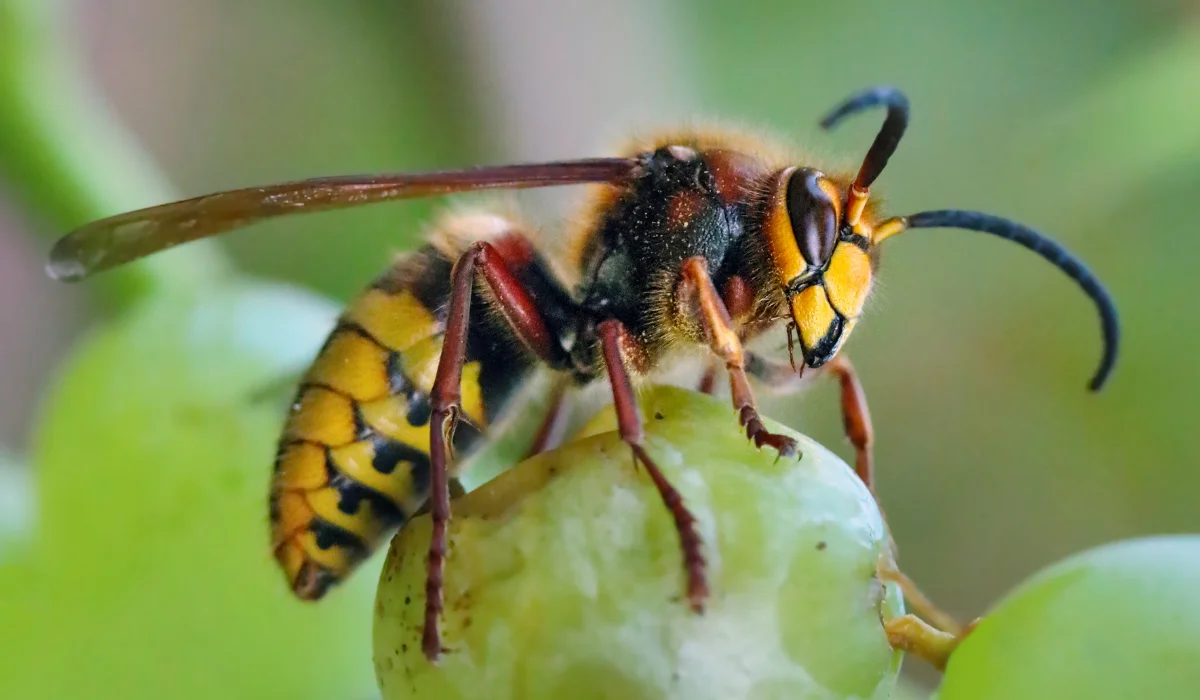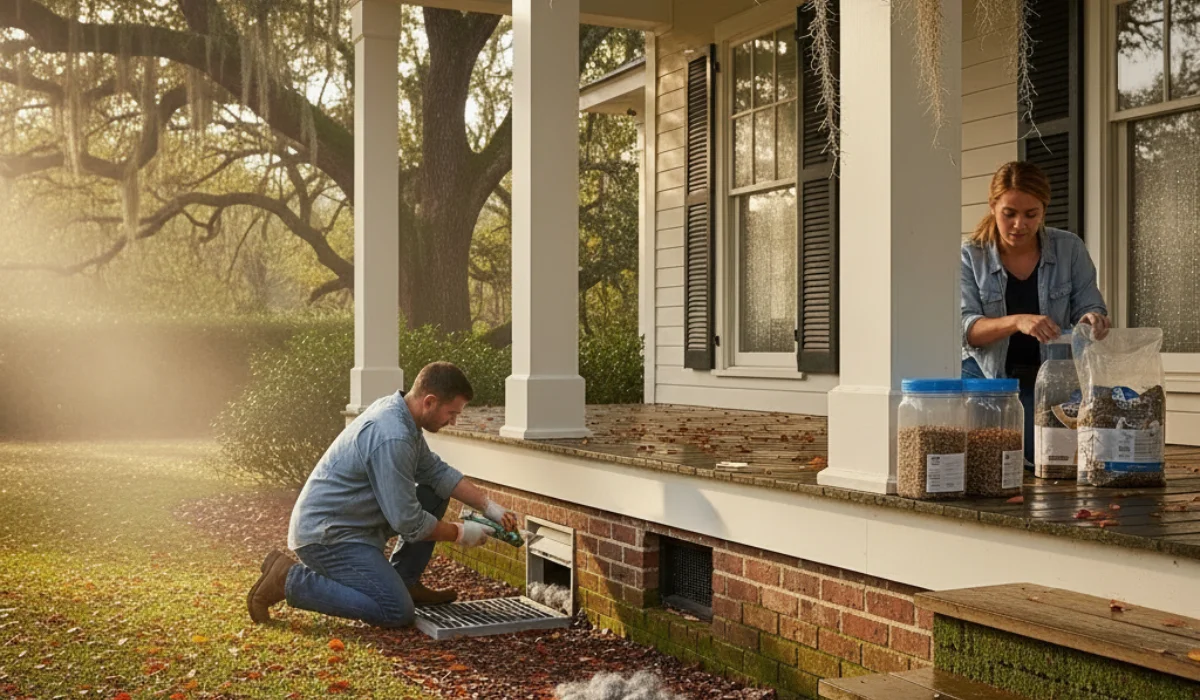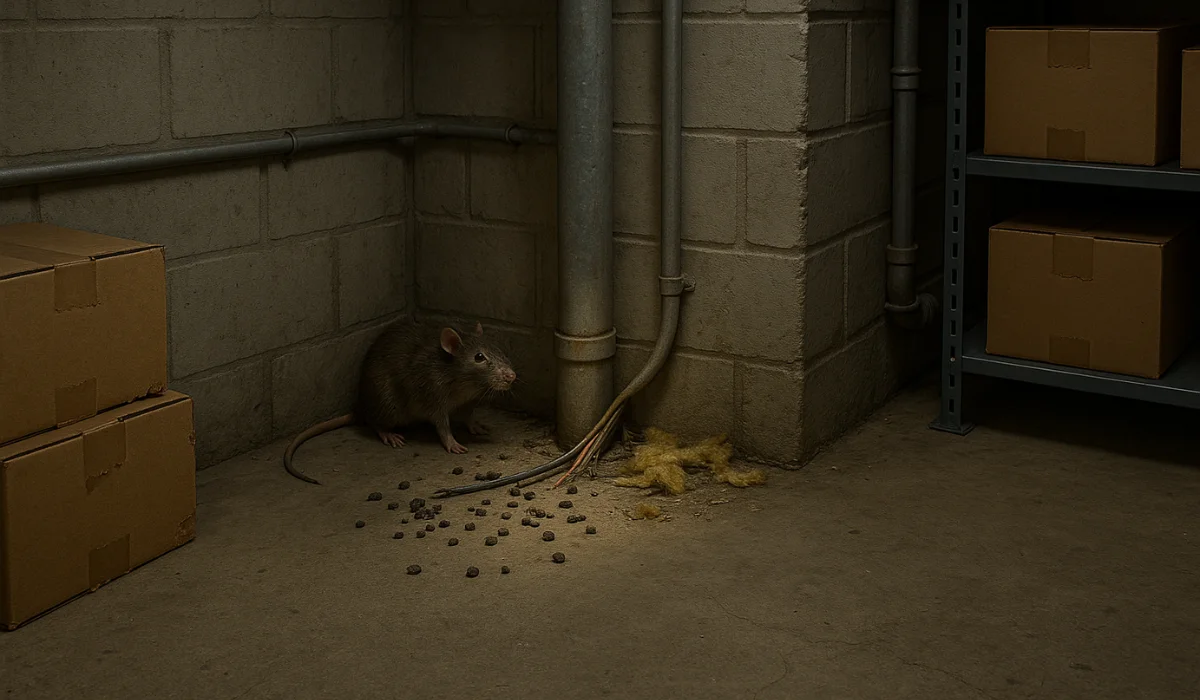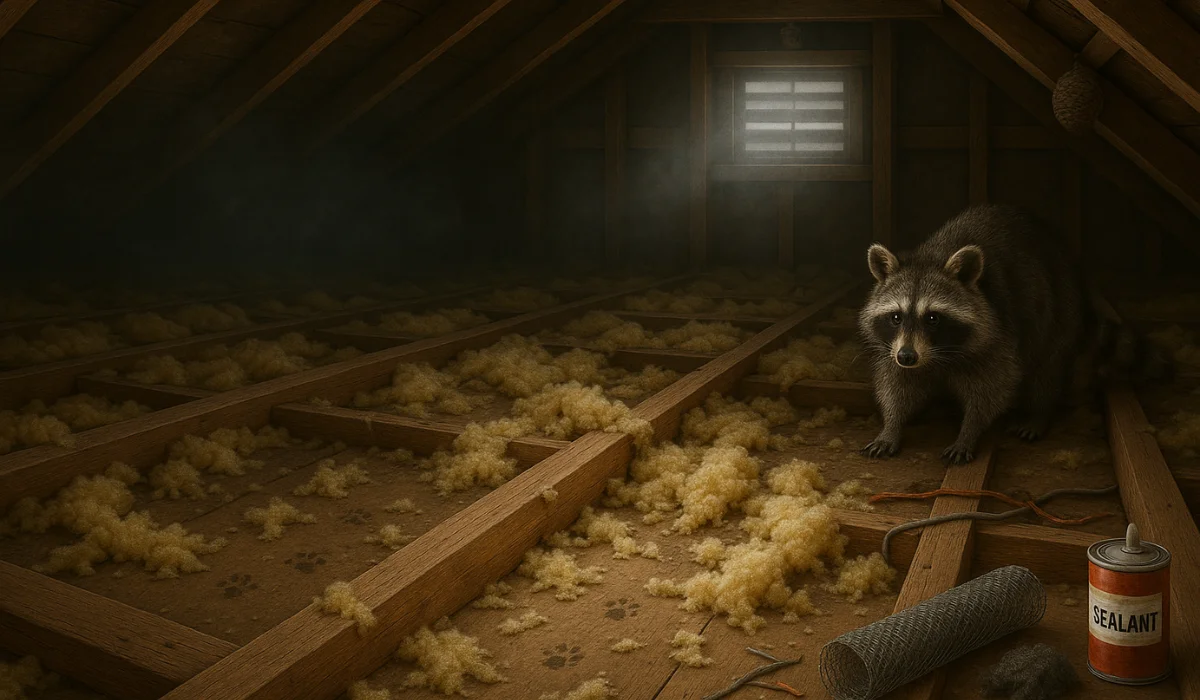The European hornets in Louisiana are creating quite a buzz these days. These large, intimidating insects have been making their presence known, causing concern among residents and local wildlife experts alike.
Want to learn more about how European hornets impact the Louisiana environment and how you can stay safe? Keep reading to find out more about these stinging insects.
Key Takeaways
- European hornets are significantly larger than common wasps, with a reddish-brown head and a yellow and black abdomen.
- Preventative measures include sealing potential entry points in homes and using natural repellents to deter hornets from nesting nearby.
- Professional pest control services are recommended for safely removing hornet nests to mitigate stings and allergic reaction risks.
WHAT ARE EUROPEAN HORNETS?
European hornets are the only true hornets found in North America. These brown hornets are notable for their distinctive physical features, origins, and preferred habitats.
Physical Characteristics
European hornets are large insects, much bigger than standard wasps. Their distinct features include
| Physical Features | Details |
|---|---|
| Size | Approximately 1 to 1.4 inches long. |
| Color | Reddish-brown head and thorax, yellow and black abdomen. |
| Face | Cream-colored or pale face. |
| Antennae | Smooth and slender. |
| Wings | Smoky brown and somewhat large. |
Common Habitats
Unlike the sites of bald-faced hornet nests in exposed trees, European hornets prefer sheltered locations to build their large paper nests. These sheltered locations protect them from the elements.
- Forests: Particularly in decaying tree trunks.
- Structures: Attics, barns, sheds.
- Hollow Trees: Preferring larger, older trees.
- Urban Areas: Under decks, in wall voids.
WHEN ARE EUROPEAN HORNETS MOST ACTIVE?
These stinging insects often build their nests in trees, including dogwood and fruit trees, using their dense foliage for protection and food sources.
Throughout the year, seasonal patterns mark their activity, such as:
| Seasonal Patterns | Activity |
|---|---|
| Late Summer | High activity, visible around nests |
| Overwintering | Queens go into overwinter |
| Following Spring | New hornet colonies are established. |
POTENTIAL RISKS
Although not inherently aggressive, European hornets are known for their defensive and sometimes aggressive behavior. When threatened, they can sting multiple times, unlike bees that lose their stinger.
Allergic reactions to hornet stings can be severe and sometimes life-threatening. So, knowing the signs is essential. Here’s what you must know:
| Reactions | Signs |
|---|---|
| Skin Reactions | Swelling, redness, and itching. |
| Systemic Reactions | Difficulty breathing, swelling of the throat, and dizziness. |
| Anaphylaxis | A medical emergency that needs prompt treatment. |
They also tend to protect their nests vigorously, making encounters with humans potentially dangerous. They also target lights at night, which can lead to unexpected confrontations.
HOW TO PREVENT EUROPEAN HORNET INFESTATIONS
Secure Homes and Yards
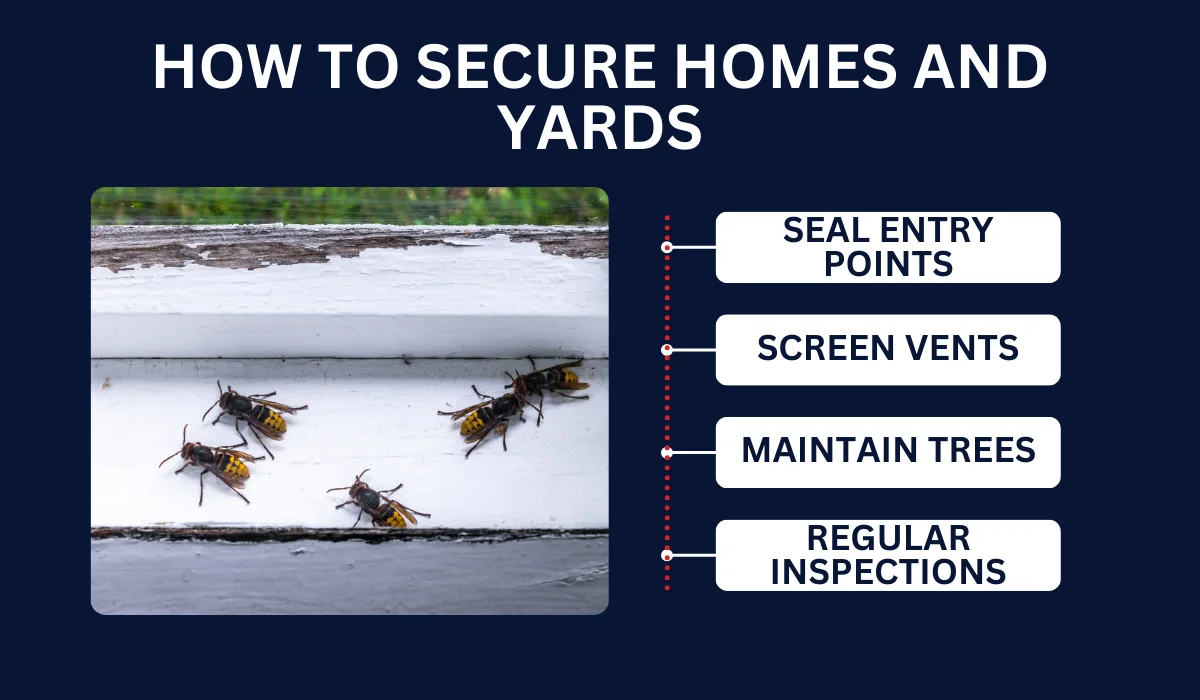
Securing homes and yards involves identifying and closing off potential nesting sites and access points. As homeowners, consider these essential steps:
- Seal Entry Points: Use caulk or expanding foam to seal gaps in walls, roofs, and around windows.
- Screen Vents: Install fine mesh screens on vents and chimneys to prevent hornet entry.
- Maintain Trees: Trim branches and remove hollow trees near homes to eliminate nesting sites.
- Regular Inspections: Conduct routine checks of attics, wall voids, and garden areas for early signs of nests.
Use Natural Repellents
Natural repellents can reduce the likelihood of hornets selecting your property for nesting. These methods often involve using scents or materials that hornets find unattractive.
| Deterrents | What To Do |
|---|---|
| Essential Oils | Mix clove, lemongrass, and geranium oils with water and spray around potential nesting sites. |
| Peppermint | Plant peppermint or spraying peppermint oil mixtures deters hornets. |
| Citrus Peels | Spread dried citrus peels around your yard or garden. |
| Fake Nests | Place fake hornet nests can trick European hornets into believing the area is already occupied. |
PROFESSIONAL REMOVAL AND CONTROL
Professional European hornet removal in Louisiana involves precise attention to detail to ensure safety and effectiveness. Pest control services utilize specialized products and protective gear to handle potentially dangerous infestations.
At LaJaunie’s Pest Control, our exterminators follow our standard process for hornet removal. During the initial visit:
- Inspect the Area: Survey areas like grass, foliage, and eaves up to 25 feet high for nests or beehives.
- Verify the Species: Identify whether the issue involves European hornets, Asian giant hornets, yellowjackets, or other pests.
- Assess the Infestation: Determine the severity and location of nests, focusing on where hornets are most active.
- Apply Treatments: Use products like Waspfreeze or Bifen to eliminate pests safely.
- Use Protective Gear: Technicians wear bee suits to protect against stings.
Finally, they may provide tips for preventing future infestations.
WHEN TO CALL A PROFESSIONAL
Spotting a European hornet nest in your yard can be unnerving. So, if you see more than a few of these stinging insects, there’s likely a nest nearby that requires pest control professionals.
Whether you’re in Baton Rouge or New Orleans, seeking expert help should be easy. For immediate intervention for a severe infestation, let Lajaunie’s wasp & hornet control specialists tailor a solution that’s right for your home.
For more information about the areas we service, visit our location page.
 By: LaJaunie's Pest Control
By: LaJaunie's Pest Control 